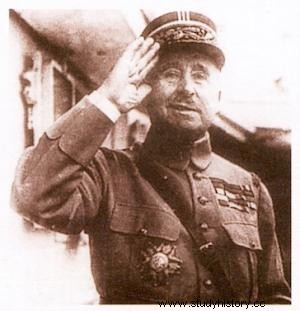Robert Georges Nivelle, born in Tulle on October 15, 1856 and died on March 23, 1924 in Paris, was generalissimo, commander-in-chief of the French armies during the First World War.

French officer of English mother (which earned him to be bilingual ), he was an artilleryman by training and graduated from the École Polytechnique in 1878.
He served in Indochina, Algeria and China as an artillery officer, and was promoted to brigadier general at the same time as Pétain in October 1914 at the start of the First World War.
On April 19, 1916, he succeeded Pétain in charge of defending Verdun in command of the 2nd Army and took over the forts of Douaumont and Vaux from the Germans alongside General Mangin, already showing little respect for human lives. Following these victories, on December 25, 1916 and because his promises of a rapid victory seduced the Army Committee in the Chamber, he replaced General Joffre as Commander-in-Chief of the Armies, elevated to the dignity of Marshal of France but considered too static and worn down by two successive years of trench fighting without any opportunity for a decisive breakthrough.
He charms his British allies because he speaks fluent English. He decided to put an end to the war of attrition led around Verdun and to return to the “sudden attack”:he intended to win the decision by massive frontal attacks sheltered by a curtain of fire. Seduced, Lloyd George agrees to place British troops under his command. But it has been claimed that keeping a secret is not Nivelle's forte, and he is said to have spoken about his offensive to ladies over dinner. To make matters worse, the Germans seized a copy of his plan of attack from a trench they had captured. The offensive he launched therefore had no surprise effect against a very strong defense on April 16, 1917, and the Battle of the Chemin des Dames ended in failure and was very costly in human lives:the Allies lost 350 000 men for an insignificant gain of ground. This was the beginning of the famous Mutinies of 1917. The name of Craonne, located in the heart of the battle of the Chemin des Dames, was popularized by La Chanson de Craonne which remains associated with the 1917 mutineers of the First World War.
A month later he was replaced in disaster by Pétain and sent in disgrace, in December 1917, to take command of the French troops in North Africa. He returned to France after the war and retired in 1921. He died in his bed in 1924.
